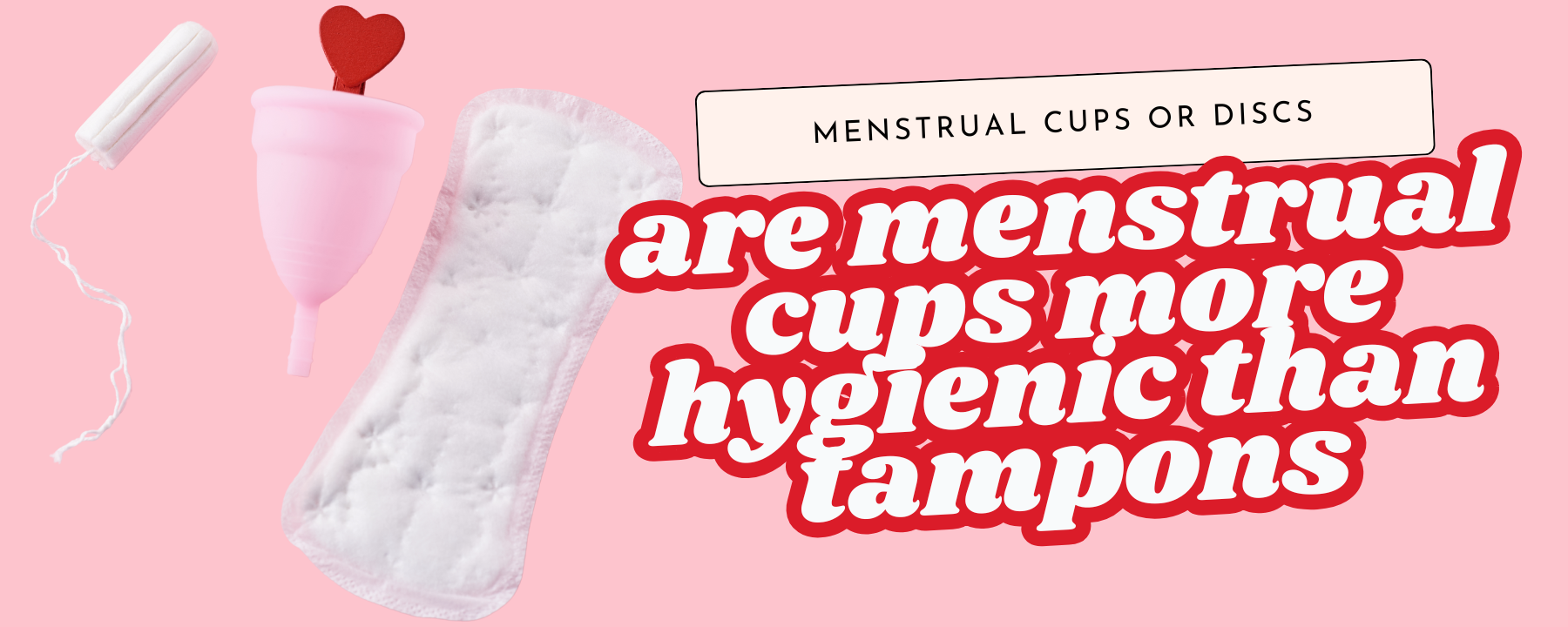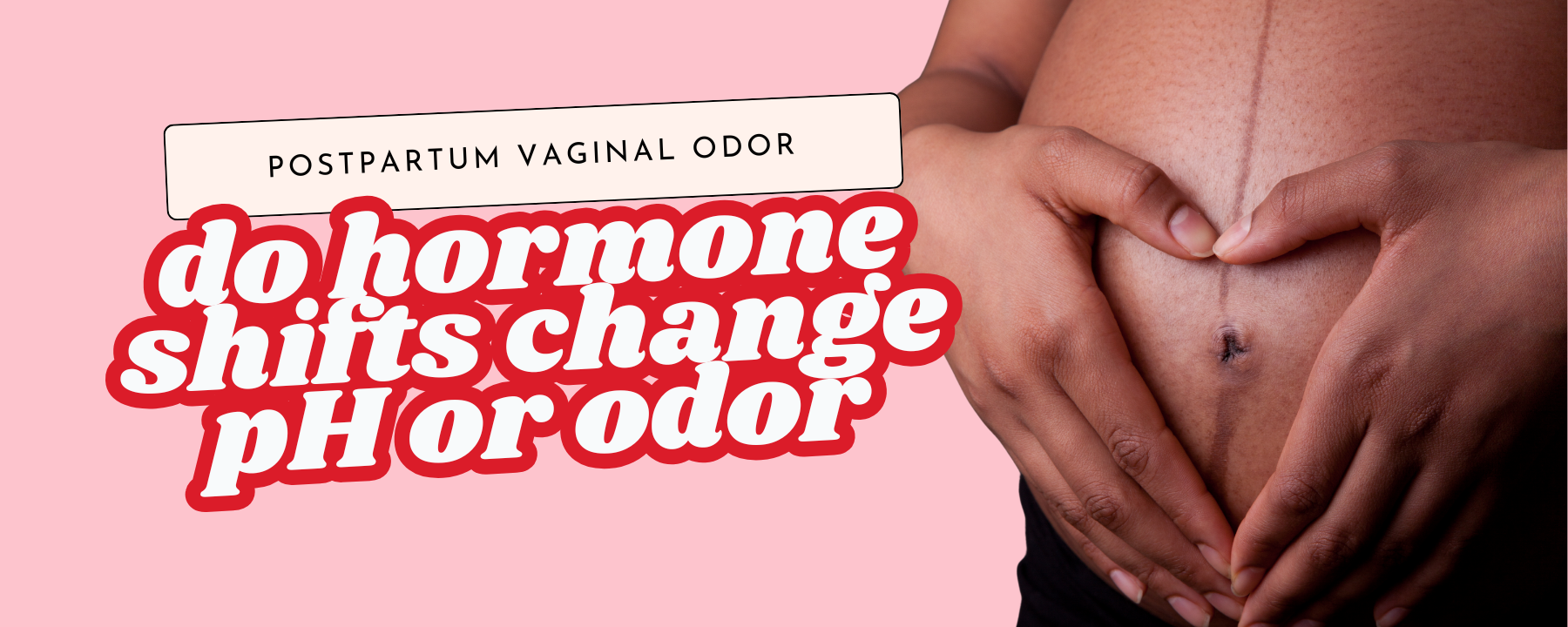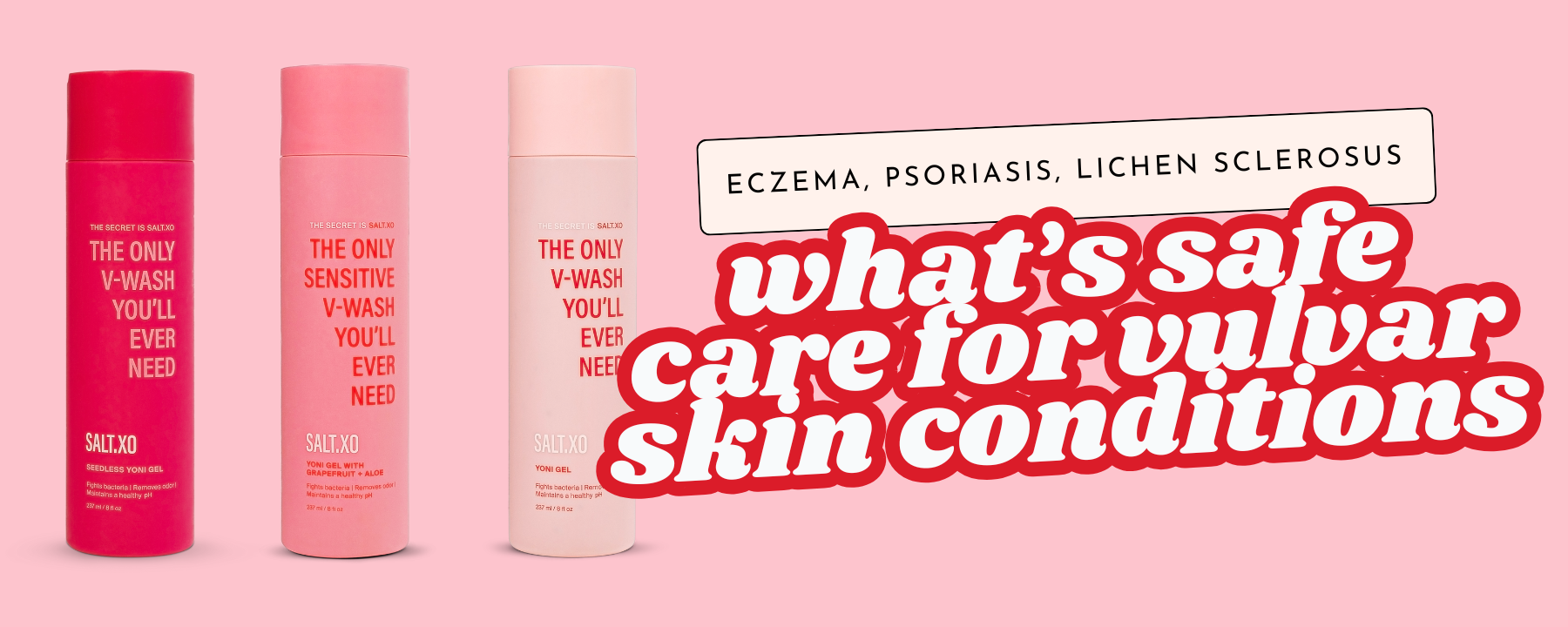Are Menstrual Cups or Discs More Hygienic Than Pads/Tampons?

Yes—with proper use and cleaning, menstrual cups (and likely discs) are very hygienic. Research shows low infection rates and very rare toxic shock syndrome (TSS) when used correctly. Hygiene depends most on wear time, hand/device cleaning, and storage—not on the product alone. Tampons are safe when changed on time, but over-wearing high-absorbency tampons raises TSS risk.
TL;DR
-
Cups & discs: Hygienic with correct cleaning and wear-time discipline; TSS is very rare.
-
Tampons: Safe when changed every 4–8 hours; over-time wear is the key risk factor.
-
Pads/period underwear: No internal TSS risk; change when damp to avoid skin irritation.
-
The most hygienic option is the one you can keep clean, change on time, and store properly.
Safety at a Glance (What the Evidence Says)
-
Medical reviews find menstrual cups are safe and acceptable across many users, with few documented TSS cases relative to the millions of cycles of use.
-
TSS has historically been associated with over-time tampon wear, especially high-absorbency products; following labeled wear-time guidelines keeps risk low.
-
Menstrual discs are also internal, non-absorbent collectors (like cups). Peer-review data are newer/less abundant, but best-practice hygiene is similar and risk appears low when used correctly.
Bottom line: behavior > product. Clean hands, correct wear times, and proper device cleaning/storage matter most.
Microbiome & BV—Do Products Matter?
-
Internal collectors (cups/discs) do not absorb vaginal fluid; they collect it. Early studies suggest cup users may have no harmful shifts in the vaginal microbiome compared to tampon users, and some cohorts even show lower bacterial vaginosis (BV) prevalence among cup users.
-
Evidence is promising but not definitive; personal biology, hygiene habits, and product fit also influence comfort and odor.
Cups vs. Discs vs. Tampons vs. Pads (Hygiene at a Glance)
|
Product |
How It Works |
Typical Wear Time* |
Hygiene Risks (If Misused) |
Best Practices |
TSS Notes |
|
Menstrual Cup (reusable silicone) |
Internal collector that seals below the cervix |
Many brands suggest empty every 8–12h (follow IFU) |
Biofilm/odor if poorly cleaned; contamination with unwashed hands |
Wash hands; rinse and wash with mild, fragrance-free soap at each empty; sterilize/boil between cycles; store dry in breathable pouch |
Very rare case reports; follow hygiene/wear-time guidance |
|
Menstrual Disc (reusable or single-use) |
Internal collector that tucks behind pubic bone |
Follows brand IFU; often up to 12h |
Insertion/removal hygiene lapses; improper cleaning |
Same hand hygiene as cups; if reusable, clean per maker; if single-use, discard properly |
Limited data; presumed low with proper use |
|
Tampon (absorbent) |
Internal absorbent that expands with fluid |
Change every 4–8h |
Over-time wear, high-absorbency misuse |
Use lowest absorbency that works; change on time; wash hands |
Known TSS association when misused/over-worn |
|
Pad / Period Underwear (external) |
External absorbent |
Change when damp |
Skin irritation if left wet; odor if over-worn |
Change regularly; choose breathable fabrics |
No internal TSS risk |
*Always follow your specific product’s instructions for use (IFU).
The Hygiene that Actually Matters (Behavior > Brand)
-
Hand hygiene before insertion/removal.
-
Wear-time discipline: Don’t exceed labeled hours (tampons 4–8h; cups/discs typically 8–12h per brand guidance).
-
Device cleaning:
-
Cups (reusable): at each empty, rinse with clean water, then wash with mild, fragrance-free soap; reinsert. Sterilize/boil between cycles; let fully dry; store in a breathable pouch.
-
Discs: follow the maker’s cleaning directions; reusable discs typically mirror cup care; single-use discs are not reusable.
-
Travel/water quality: If clean water is limited, wipe the cup/disc with a clean tissue, reinsert, and do a thorough wash at the next opportunity; consider bottled/boiled water for rinsing; thoroughly clean and sterilize when you’re able.
-
Nail care: Keep nails smooth/short to reduce micro-abrasions and contamination.
How to Clean a Menstrual Cup (Step-by-Step)
-
Wash hands with soap and water.
-
Remove and empty the cup into the toilet/shower.
-
Rinse with cool water first (helps reduce staining), then wash with mild, fragrance-free soap; rinse thoroughly (no residue).
-
Dry if you can; reinsert following the brand’s fold/placement instructions.
-
Between cycles: boil/sterilize per brand IFU; allow to dry fully; store in a breathable pouch (not airtight).
Never use harsh cleaners, perfumes, antibacterial gels, or oil-based products on silicone devices. Don’t microwave unless the manufacturer provides a specific microwave-safe sterilizing method.
Who Might Prefer Which (Practical Fit > Hype)
-
Heavy flow or long meetings/travel: Cups/discs (higher capacity, less frequent changes) if you can clean safely.
-
Overnight sleepers >8h: Consider cups/discs or external options (pads/period underwear) to avoid exceeding tampon wear time.
-
History of TSS or concern about absorbency: Many people choose non-absorbent collectors or external options; talk with your clinician if unsure.
-
Postpartum/pelvic floor changes: Fit can change—test what seals best and leaks least; check with your clinician postpartum.
Red Flags: Stop and Seek Care
-
Sudden high fever, vomiting/diarrhea, dizziness/fainting, sunburn-like rash, or feeling acutely ill during menses—remove the product immediately and seek urgent care (possible TSS).
-
Persistent strong odor, pelvic pain, unusual discharge, or difficulty removing a device—contact a clinician promptly.
FAQs
Are cups/discs more hygienic than tampons?
They can be—when cleaned properly and changed on time. Tampons are also safe when changed every 4–8 hours. Hygiene is mostly about consistent, correct use.
Can menstrual cups cause TSS?
TSS with cups appears very rare. It’s most strongly linked to over-time tampon wear. With any internal product, use clean hands, respect wear times, and seek care if you feel very unwell.
Do cups improve BV risk?
Some studies suggest lower BV prevalence among cup users, but the evidence isn’t definitive. Your routine (hygiene, wear time, breathable fabrics) still matters.
How often should I empty a cup or disc?
Follow your brand’s instructions. Many advise every 8–12 hours (sooner if heavy). Tampons should be changed every 4–8 hours.
Are discs safer than tampons?
Discs are collectors (not absorbent) and appear safe with proper hygiene; robust TSS data are more limited than for tampons, so follow wear-time/cleaning guidance closely.




Comments